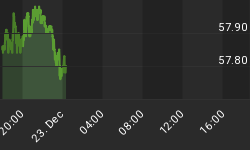Some readers have been asking how "Austrian economic analysis held up during the last recession". Brilliantly, is the answer. It successfully described the emergence of the American recession and the pattern of rising unemployment and spending neatly fitted the Austrian explanation for the boom-bust cycle. Austrianism claimed that the contraction started in the higher stages of production and then worked its way down the production structure. Figures from the NAPM (National Association of Purchasing Management) in the middle 2000 gave considerable support to this view.
The NAPM Index showed that manufacturing was contracting. Moreover, manufacturers accelerated the liquidation of inventories in April 2000, bringing the Inventories Index down from 44.2 per cent in March to 39.6 per cent in May 2001. In late 2001 another NAPM report showed that economic activity in the manufacturing sector had fallen for the 15th consecutive month in October. Leaving no room for Keynesian Pollyanna's to find a chink of light, it also revealed that the overall economy had ground to a halt. But what is of the strictest importance about both NAPM manufacturing findings is that they narrowed the beginning of the recession down to about the middle of 2000. Well guess who was the then president?
Now the index registered employment as negative from January 2001. The meaning of this was brought home when it was reported that 223,000 jobs were lost in May 2001, the biggest drop in ten years, raising the US April unemployment rate to 4.5 per cent. This was on top of a loss of 53,000 jobs in April. (Note the rate at which the jobless increased. As an aside, also note how the ever-so honourable leftist media blamed Bush for the job losses). Meanwhile, average hourly earnings rose 0.4 percent in April after a 0.4 percent increase in the previous month. There was nothing unusual here. The classical economists also observed that there was a tendency for wages to continue rising in the final phase of a boom.
Eventually the recession struck at the rest of the economy, including services, but to a lesser degree. In early May the NAPM revealed that its non-manufacturing index had dropped three points in April to 47.1. This was the lowest monthly reading in the survey's four-year history, making it a 14 point fall since December 2000. What is particularly interesting is that the NAPM survey's indicated a general contraction. Yet consumer spending actually accelerated during the recession. How could this be and why didn't the GDP go negative throughout the recession. According to Tim Kane and Rea Hederman of the Cato Institute
A vigorous public policy response turned the 2001 recession into one of the mildest downturns in modern history dating back to 1947, the year comprehensive official statistics were first recorded by the U.S. Bureau of Economic Analysis (BEA).
But this analysis only holds up if you rely entirely on GDP, which is a net value approach that ignores spending on intermediate goods. The Austrians tirelessly point out that what matters is gross spending, not net spending. By ignoring spending on intermediate goods orthodox economists greatly understate business spending reducing it to about 33 per cent of the economy when in fact it something like 66 per cent. The net approach also greatly understates the depths of recessions. Austrian analysis reveals that during the Clinton recession gross investment took a massive hit and went into freefall. (It should be noted that intermediate goods are a part of gross savings).
Then there was the fuss about debt which, like overvalued shares, was not quite the problem that many commentators predicted it would be. The real problem was not debt but the process by which massive debts were incurred. (We are still faced with the same problem today). Unless this problem is fully understood more recessions, bubbles and market crashes are guaranteed to happen.
The present monetary mess is evidence enough that the lesson of the last recession was never learnt. This brings to mind Robert McTeer of the Dallas Fed who encouraged people not to save but to keep on spending. This was the kind of dangerous Keynesian nonsense that still has some people believing that Japan's problem is that it saves too much. Unfortunately, the very same nonsense is to be found in the Australian media.
That the Austrian theory of the so-called business cycle is clearly superior to any other in existence is, unfortunately, still not widely recognized, and all but ignored in Australia.
Note: Although Australia's so-called free-marketeers still refuse to acknowledge the existence of the Austrian school others are taking note of its insights. For example, the 2001 March BIS meetings for central bankers (held behind closed doors) had a session in which Austrian analysis, among others, was used to determine the outlook for the global economy.
















